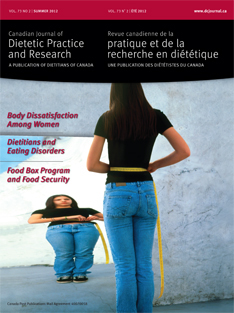Abstract
Purpose: An investigation was completed to determine how typical cooking procedures used in food preparation, such as baking and stir-frying, affect trans fats formation.
Methods: Canola oil was used as the main fat ingredient. Zucchini cake and gingersnap cookies were baked at 180° C and 200° C, while stir-fried chicken was prepared at 200° C and 275° C. The lipids from the food were extracted following the Folch procedure, and analyzed for trans fatty acids according to ISO official method 15304.
Results: Minimal changes were observed in the amount of trans fats during baking. Application of extreme temperatures during baking, which caused carbonization of the outer layer of products, yielded an insignificant increase in the amount of trans isomers. As with baking, stir-frying did not result in significant isomerization of the fatty acids, even when the oil was heated to 275° C and smoking heavily before the food was placed in it. Irrespective of the cooking procedure, linolenic acid was the most prone to isomerization with the highest amount of trans isomers formation.
Conclusions: Baking and stir-frying at normal and/or extreme temperatures do not significantly affect the amounts of trans fats. Likewise, heating oil to the smoking point during stirfrying may decrease the amount of polyunsaturated fatty acids because of oxidative degradation.
Résumé
Objectif: Une recherche a été réalisée dans le but de déterminer comment les méthodes de cuisson typiques utilisées pour la préparation des aliments, par exemple la cuisson au four et la cuisson à feu vif à la poêle (sauté), influent sur la formation de gras trans.
Méthodes: L’huile de canola a été utilisée comme gras principal. Un gâteau aux zucchinis et des biscuits secs au gingembre ont été cuits au four à 180 °C et 200 °C, et un sauté de poulet a été préparé à 200 °C et 275 °C. Les lipides des aliments ont été extraits selon la méthode Folch, puis leur contenu en acides gras a été analysé selon la norme ISO 15304.
Résultats: Des changements minimaux ont été observés sur le plan de la quantité de gras trans pendant la cuisson au four. L’utilisation de températures extrêmes pendant la cuisson au four, qui causent la carbonisation des couches extérieures du produit, a produit une augmentation non significative de la quantité d’isomères trans. Comme pour la cuisson au four, la technique du sauté n’a pas entraîné une isomérisation significative des acides gras, même lorsque l’huile a été chauffée à 275 °C et produisait beaucoup de fumée avant que les aliments soient mis dans la poêle. Sans égard à la méthode de cuisson, l’acide linolénique était le plus sujet à l’isomérisation, avec la plus grande quantité d’isomères trans formés.
Conclusions: La cuisson au four et la technique du sauté à température normale et extrême n’ont pas un effet significatif sur la quantité de gras trans. De plus, chauffer l’huile jusqu’à la faire fumer pendant la préparation d’un sauté pourrait réduire la quantité d’acides gras polyinsaturés en raison de la dégradation oxydative.



